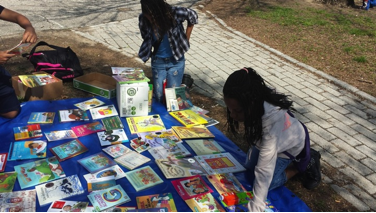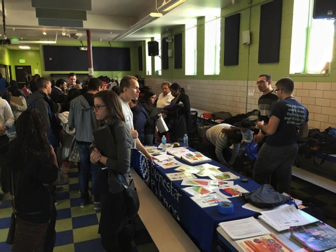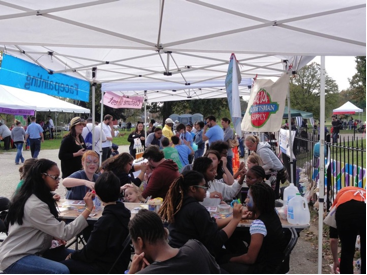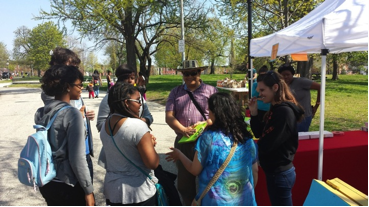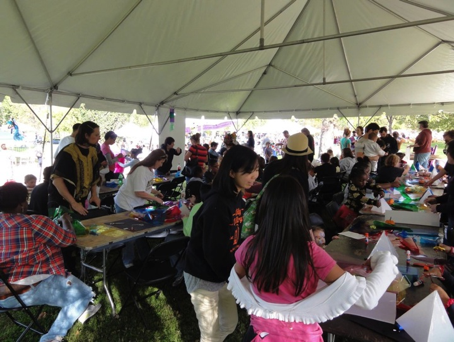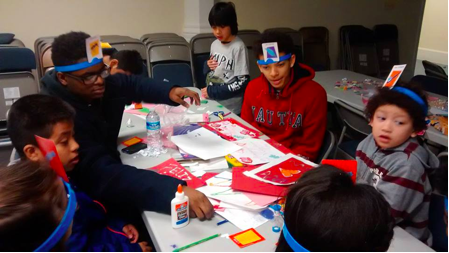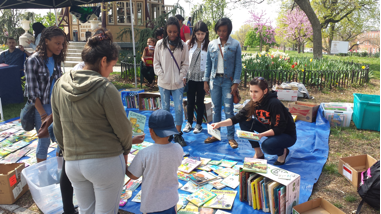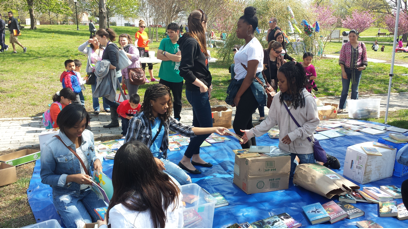- Home
- About
-
Lessons
-
Teaching with Music
>
- Song warm-up lesson plans, setup, procedure, and exams
- How to teach "Tú sí sabes quererme" by Natalia Lafourcade
- How to teach "La Carretera" by Prince Royce
- How to teach "Latinoamérica" by Calle 13
- How to teach "Prohibido Olvidar" by Rubén Blades
- How to teach "Traidora" by Gente de Zona
- How to teach "La Bicicleta" by Shakira and Carlos Vives
- How to teach "Culpa al Corazón" by Prince Royce
- How to teach "Déjà Vu" by Prince Royce and Shakira
- How to teach "Amor de Mis Amores" by Natalia LaFourcade
- How to teach "Despacito" by Luis Fonsi and Daddy Yankee
- Teaching with TPRS >
- Teaching with Tech >
- Teaching with Film >
- Teaching Social Justice >
-
Teaching with Music
>
-
Service Learning
-
Travel
- Resources
- Tutoring
- Blog
- Contact
Student Reflections on The Advocacy Project
To reflect on The Advocacy Project for Quarters 1 and 2, students were required to write a 400-word, typed reflection in Spanish describing their Quarter 1 and 2 Advocacy Projects and a future volunteer endeavor for Quarter 3 or 4.
I received some exemplar final student essays, and I will translate excerpts from these essays below.
The essay prompt was stated as follows:
I received some exemplar final student essays, and I will translate excerpts from these essays below.
The essay prompt was stated as follows:
- ¿Qué significa “piensa globalmente : actúa localmente” en tu vida y en tu communidad? ¿Qué son tres maneras que puedes “pensar globalmente y actuar localmente” en Baltimore y en la clase de español? Usa dos ejemplos de Quarter 1 y Quarter 2, y un ejemplo de tu servicio del futuro en Quarter 3 o 4.
- Translation: What does “think globally : act locally” mean in your life and in your community? What are three ways that you can “think globally and act locally” in Baltimore, using your knowledge from Spanish class? Use two examples of your volunteer service from Quarter 1 and 2, and an example of your future volunteer service in Quarter 3 or 4.
I have included the following excerpts from student Advocacy Project essay reflections. They are translated from Spanish to English from the original essays, with no correction for grammatical errors.
“In my school, Baltimore City College, we think globally and act locally. We are learning about the Hispanic community. Have we done enough for Spanish-speaking people? What can we do to help more? If we think globally, and if we act locally, we will have the answer for every question we have.” - Rayden, Spanish 2 Period 1 (pictured below with Creative Alliance, Feria de Salud, in the far left corner)
|
“I thought globally and acted locally when I went to the “Feria de Salud” (Health Fair) with my class of Spanish 2... Many people at the fair didn’t speak English. Spanish is necessary for my work with Centro Sol. This experience helped me to realize that Spanish is important. I will not be able to speak with people of different cultures if I don’t speak two languages.” “To be a part of the Spanish-speaking community is very fun. It is fun because now I am a part of two communities. In the future, I want to continue volunteering with Creative Alliance”. - Afiya, Spanish 2 Period 11 (pictured in the center, face painting with Creative Alliance, and in the front center, with a white shirt)
|
“In the past half year, I have achieved a lot. I did volunteer work in the Lantern Festival and in the Feria de Salud. Also, I have lots of plans for the future. There are many Latinos in every part of the city of Baltimore. Although we may be different, we can learn their language, their culture, and their lifestyle. They will feel equal and they will be a part of the community. This is why thinking globally and acting locally is so important." |
"In the United States there are 54 million Latinos. Maryland has 337, 341 Latinos. The city of Baltimore has 15,000 Latinos. Although there are many Latinos in our community and country, sometimes we (think) we are different. But, this is incorrect, and this is a big problem. I thought globally and acted locally when I helped Latinos in my community to feel equal and help them to feel that they are a part of our community.” - Jasmine, Spanish 2 Period 1 (pictured in the front center with a black sweatshirt, volunteering with Creative Alliance)
|
“Latinos in Baltimore don’t have the same opportunities as other races in Baltimore. I can think globally and act locally when I am a volunteer at the Kaleidoscope Festival, when I help at Creative Alliance, and when I will be a volunteer for Embajadores de Salud. I hope that in helping these families, I can give children a better future." - Diego, Spanish 2 Period 11 (Diego pictured volunteering with the Johns Hopkins School of Medicine program Embajadores de Salud)
|
“Although less than 5% of the population of the city of Baltimore is composed of Hispanics, they are citizens that should live with the same rights and opportunities like everyone who lives here. I think globally and act locally in the city of Baltimore when I am a volunteer for Creative Alliance, when I am a volunteer for the Feria de Salud, and when I will be a volunteer for the classes of English Education.” “I thought globally and acted locally when I was a volunteer for the Feria de Salud. When I was there, I helped many people to receive health exams to live a better life. Those exams gave precise information to better the health of Hispanics who did not speak English very well. I learned in Spanish class that immigrants who immigrate here to the United States have many problems receiving help. When I helped immigrants in Baltimore City, (helped to) change the lives of some people." |
- Jaylen, Spanish 2 Period 11 (pictured below, far left corner in plaid, and in the center in the second picture)
|
|
This website is a participant in the Amazon Services LLC Associates Program, an affiliate advertising program designed to provide a means for us to earn fees by linking to Amazon.com and affiliated sites.
|
- Home
- About
-
Lessons
-
Teaching with Music
>
- Song warm-up lesson plans, setup, procedure, and exams
- How to teach "Tú sí sabes quererme" by Natalia Lafourcade
- How to teach "La Carretera" by Prince Royce
- How to teach "Latinoamérica" by Calle 13
- How to teach "Prohibido Olvidar" by Rubén Blades
- How to teach "Traidora" by Gente de Zona
- How to teach "La Bicicleta" by Shakira and Carlos Vives
- How to teach "Culpa al Corazón" by Prince Royce
- How to teach "Déjà Vu" by Prince Royce and Shakira
- How to teach "Amor de Mis Amores" by Natalia LaFourcade
- How to teach "Despacito" by Luis Fonsi and Daddy Yankee
- Teaching with TPRS >
- Teaching with Tech >
- Teaching with Film >
- Teaching Social Justice >
-
Teaching with Music
>
-
Service Learning
-
Travel
- Resources
- Tutoring
- Blog
- Contact
